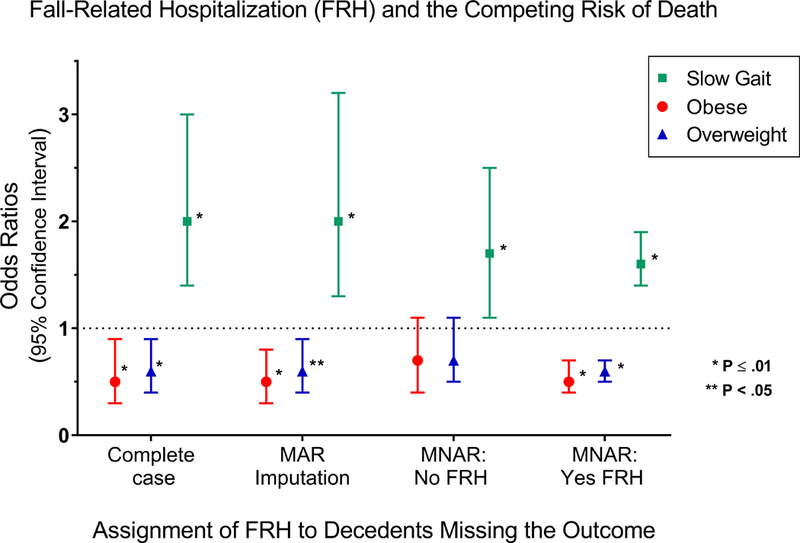Figure 1.

Associations (Odds-Ratios with 95% Confidence Intervals) between explanatory variables (indicators of being overweight, of being obese and of slow gait speed) and the outcome (occurrence of Fall-Related Hospitalization (FRH) in a given 18 month interval) are presented for four different data scenarios that differ in their treatment of death during follow-up over more than 10 years. The four scenarios are: complete case where follow-up is truncated by death; missing-at-random where outcomes of decedents are multiply imputed; missing not at random where all missing decedent outcomes are set to no FRH; missing not at random where all missing decedent outcome are set to FRH. The complete case data consists of 3969 person-intervals and the other scenarios consist of 5111 person-intervals. Point estimates, confidence intervals and p-values were calculated with multivariable logistic regression with generalized estimating equations and a first-order autoregressive covariance structure, and included adjustment for age, sex, race, indicators of being overweight or obese, depressive symptoms, number of chronic conditions, cognitive status, slow gait speed, and the number of the most recent comprehensive interview (1 for baseline through 7 for 108 months).
Abbreviations: MAR = missing at random; MNAR = missing not at random
